Last updated: June 6, 2025
Article
Bear Valley School Cultural Landscape
Landscape Overview
The Bear Valley School Historic District is a 1.5 acre site in Pinnacles National Park, located toward the southern end of Bear Valley in the remote mountains of southern San Benito County, California. For more than half a century, it was the only public school serving the small agricultural homesteading community of Bear Valley.The school was supported by local tax contributions, so attendance was not limited by income or social status. Students were taught by a single teacher in one room, which required cooperation across grade level, age, and intellectual ability. The equalizing effect of this unique pedagogical environment, as well as the school's open admission and lack of fees, were characteristics in the common school movement which had originated in the American Northeast during the period of the Early Republic, with older precedents in colonial New England.
The one-room schoolhouse and its surroundings represent an adaptation of the common school tradition to the rural, sparsely populated conditions of the American West. The landscape remains an example of this educational tradition in the local context of Bear Valley, where it had a profound effect on the formation of the community in the early 1900s.
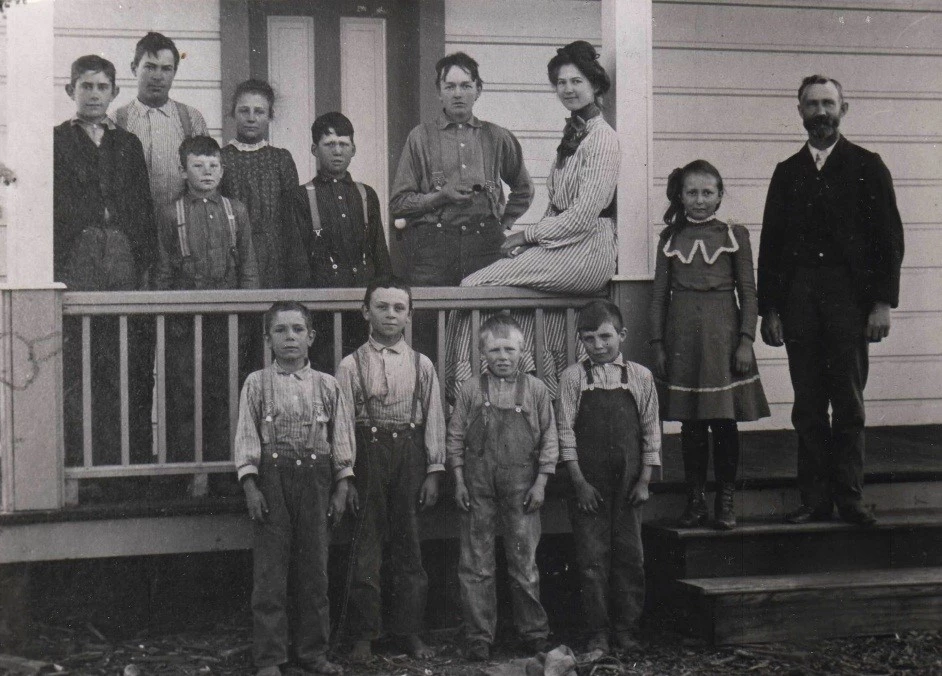
From the private collection of Jane Lausten (used with permission in NPS Cultural Landscape Inventory report)
Landscape History
The period of historic significance for the Bear Valley School cultural landscape begins in 1902, when construction began on the present schoolhouse—the second to exist on this site—and ends when the last classes were held in 1950.
The first school house on the site was built in 1873, a year before the Bear Valley School District was established. Soon after, a fence of redwood stakes and wire was constructed around the perimeter of the schoolyard.
By the end of the 19th century, as homesteads in the region became better established, the number of children enrolled in the school increased. School attendance reached its peak in 1890, with 38 students. At the same time, the number of school districts in the county increased, growing to 51 districts compared to only 12 districts when Bear Valley School was created.
In 1902, Horace Bacon, a revered teacher at the school, recognized the community’s need for larger schoolhouse, which was achieved with funds raised entirely from the local community. By 1903, the single-room, one-story structure was built. The simplified Greek-revival style building had a full-width front porch. Two doors were placed symmetrically on the front wall to provide separate entrances for girls and boys, a common feature of many western schoolhouses that was borrowed from vernacular church architecture. The same year, the old school house building was sold at auction and later removed from the site.
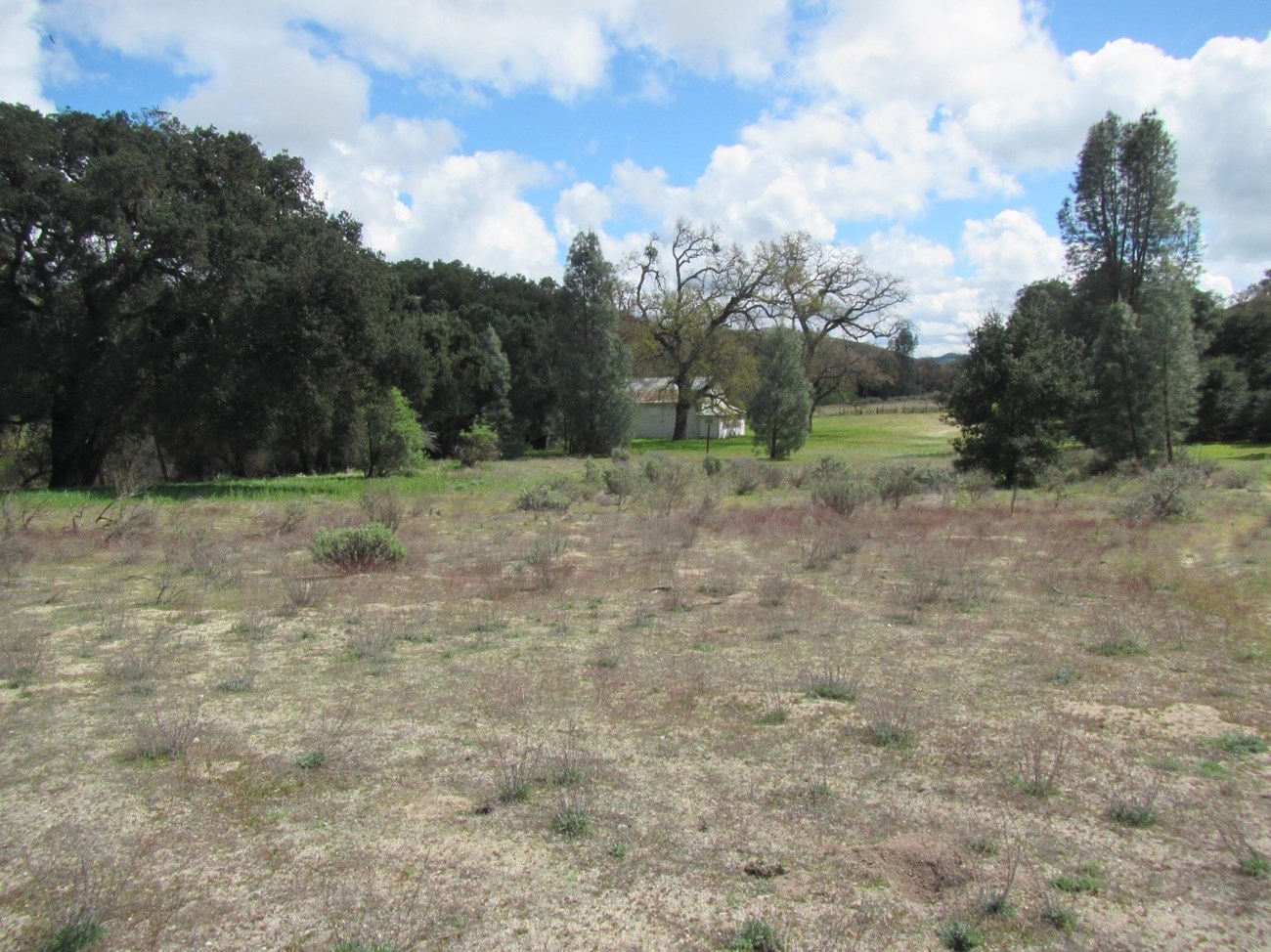
NPS
After the new schoolhouse was built, the original perimeter fence still enclosed the open field to the north. This made the schoolyard a well-defined space, although it was never a designed landscape in any formal sense. Natural features were an important characteristic of the setting and included the surrounding fields to the north and south, the large valley oaks which shaded the building, a creek channel to the rear of the schoolhouse, and views of the hills bordering Bear Valley to the east. A road was built within the parcel in 1895, providing a route past the schoolhouse and through the yard.
By the time the new schoolhouse was completed, the local community had stopped growing. Changing economic conditions and drought made it harder for small farmers to survive on the limited resources of Bear Valley.
There were few alterations during Horace Bacon’s twenty-year tenure (1896-1916). Later, the school was modified to accommodate high school students, and the front porch was reconfigured a number of times for utilitarian purposes.
In 1923, a Valley Oak (Quercus lobate) was planted northwest of the schoolhouse to honor Horace Bacon for his service to the school. It is surrounded by a wooden enclosure, which differentiates it from the naturally-occurring valley oaks in the landscape.
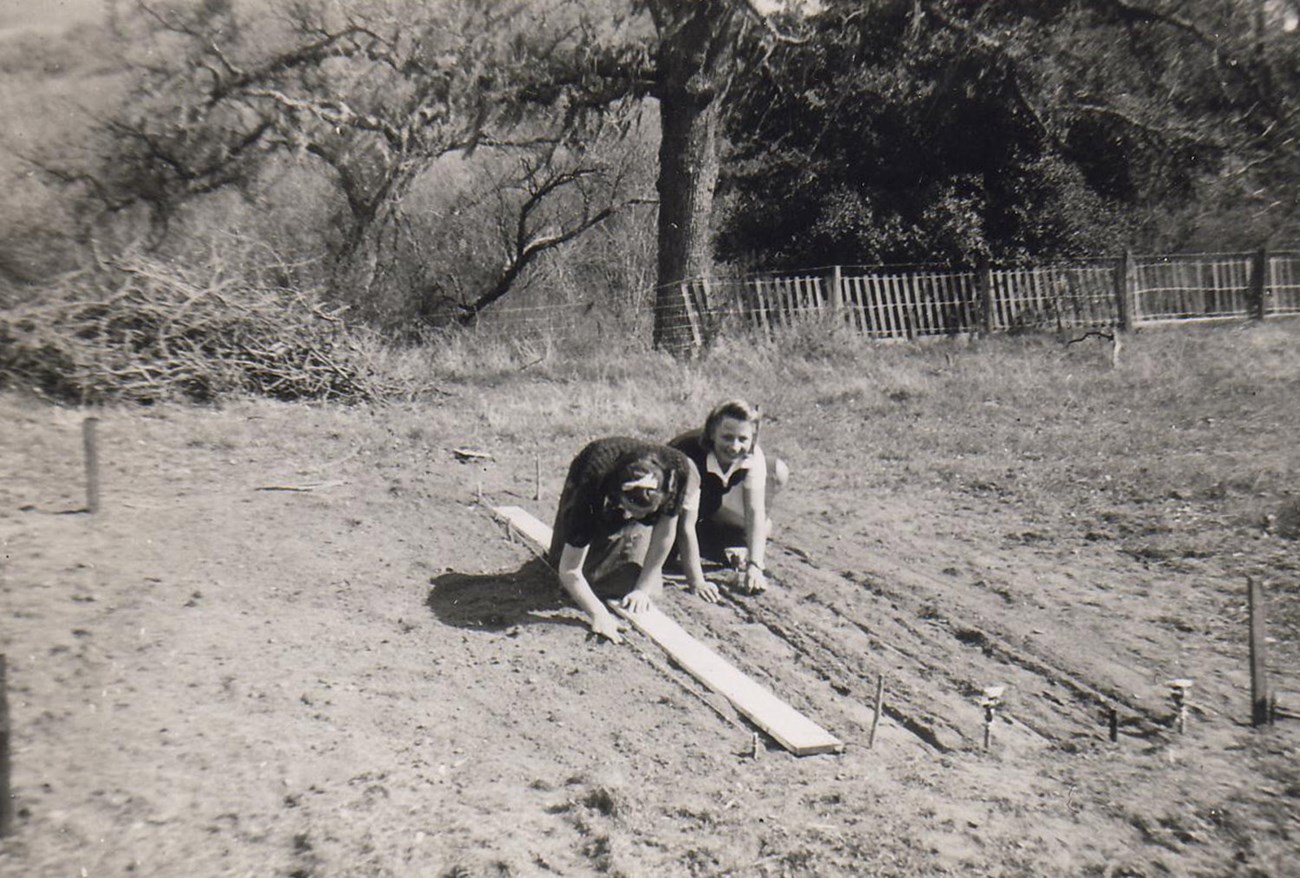
NPS / Bernice D'Arcy Album, Pinnacles National Park Cultural Resources Division
World War II dramatically changed life in the agricultural community and accelerated economic processes that encouraged movements in the U.S. population from rural to urban environments. In the years following the war, the school-age population in Bear Valley fell precipitously. Within five years of the war's end, there were not enough children in Bear Valley to justify an independent school district. The Bear Valley School closed in 1950 after seventy-six years of operation, nearly fifty of which occurred in the present schoolhouse.
Landscape Characteristics
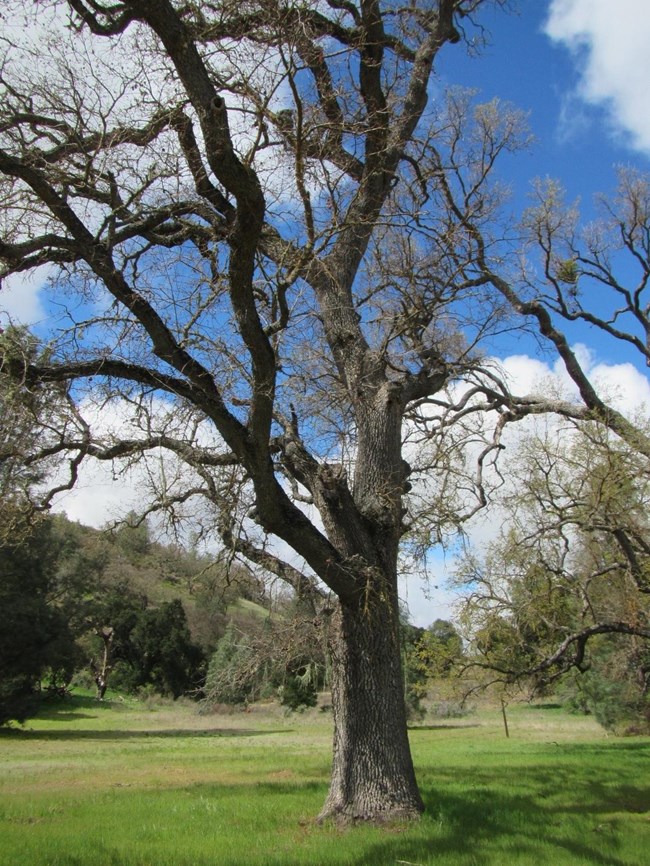
NPS
Since the historic period (1902-1950), there have been minor changes to the structure and throughout the landscape. These include the transformation of the nearby county road into California State Highway 25. Also, denser native vegetation has grown along the riparian corridor of Bear Creek, obscuring the view from the schoolyard to the hills bordering Bear Valley.
Although regular maintenance continued as the building was used for community meetings and other events, the schoolhouse was largely vacant for several decades. It came into NPS ownership as part of Pinnacles National Monument (now Pinnacles National Park) in November 2011.
Today, the historic character of Bear Valley School is reflected through characteristics and features of the landscape.
-
Topography: The topography of Bear Valley greatly influenced the homestead land uses along Bear Creek. The Bear Valley School site is characterized by the gentler terrain of the Bear Valley bottomlands, allowing ease of access and use as a functional schoolyard.
-
Grassland and brush: Historic photographs show that the landscape was kept relatively open during the historic period to allow play and to reduce risk of fire by preventing excessive growth and further encroachment of native brush.
-
Horace Bacon Commemorative Tree: In 1923, a Valley Oak (Quercus lobate) was planted northwest of the schoolhouse to honor Horace Bacon for his service to the school. It is surrounded by a wooden enclosure.
-
Most of the vegetation in the school parcel is naturally occurring, including the four valley oak specimen trees that shade the schoolhouse.
-
Bear Valley schoolhouse: Constructed from 1902-1903, the one-room schoolhouse in a Greek-revival style is typical of the rural architecture from this period in the American West. Minimal changes to the porch and window placement, mostly during the period of significance, reflect patterns of maintenance and adaptation in the school’s history.
-
Bear Valley school well: A well was bored in 1902 to serve the school. It was originally serviced by a windmill, which no longer exists.
-
Redwood stave and wire perimeter fence and gate: The fence was constructed in 1895, surrounding the entire 3-acre space used by the school. While some portions of the original fence have collapsed, it continues to define the original perimeter of the historic schoolyard.
-
Other structures associated with the landscape were added later and do not contribute, but most are compatible with settlement and development in the area.
Landscape Preservation
Perimeter Fence Reconstruction
Since 2021, the park has been organizing volunteer events to reconstruct the 1895 perimeter fence. Most volunteers are local ranchers, and many are descendants of former Bear Valley School students. They used salvaged old growth redwood to replicate the original fence material, and a custom-built fence building machine twists the wires. By early summer of 2025, the north, south, and east sides of the fence were nearly completed.
Historic Schoolhouse
The park expects to begin construction to restore the historic schoolhouse in 2026.
Quick Facts
-
Cultural Landscape Type: Historic Vernacular Landscape
-
National Register Significance Level: Local
-
National Register Significance Criteria: A
-
Period of Significance: 1902-1950
Bear Valley Schoolhouse
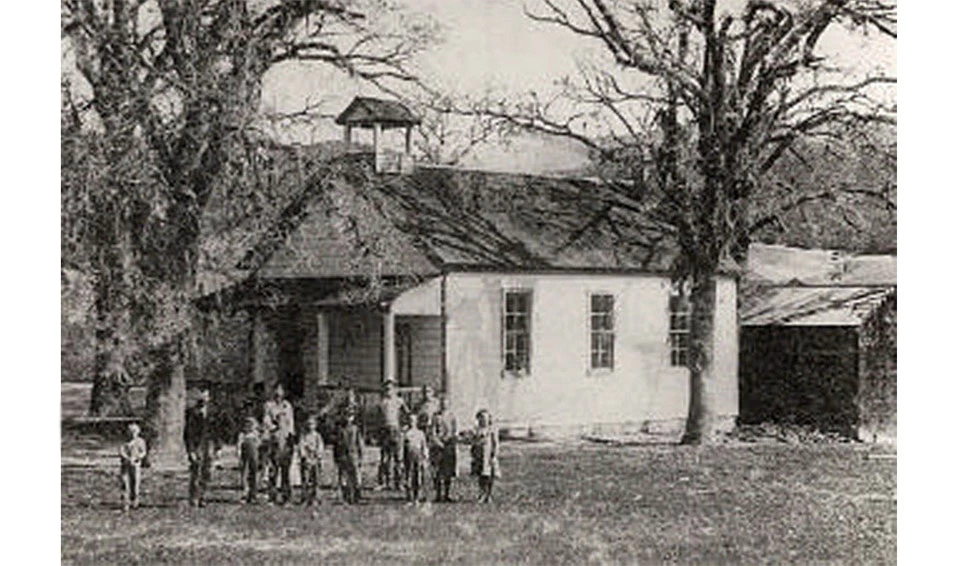
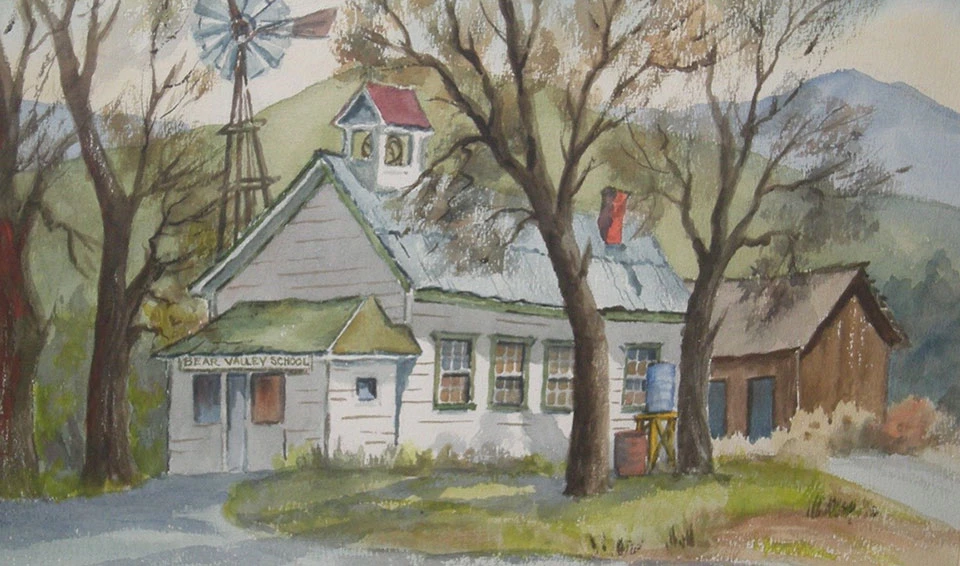
Left image
Bear Valley Schoolhouse, ca. 1905
Credit: From "Aunt Grace Album," in Deborah Melendy Norman, ed., "South County Pioneers: Version 3.0," December 2008, p. 57 (In NPS Cultural Landscape Inventory)
Right image
Painting of Bear Valley School in 1950
Credit: Rachel Bentley (Part of a series of watercolors representing all of California’s schools, commissioned by the California Department of Education)






